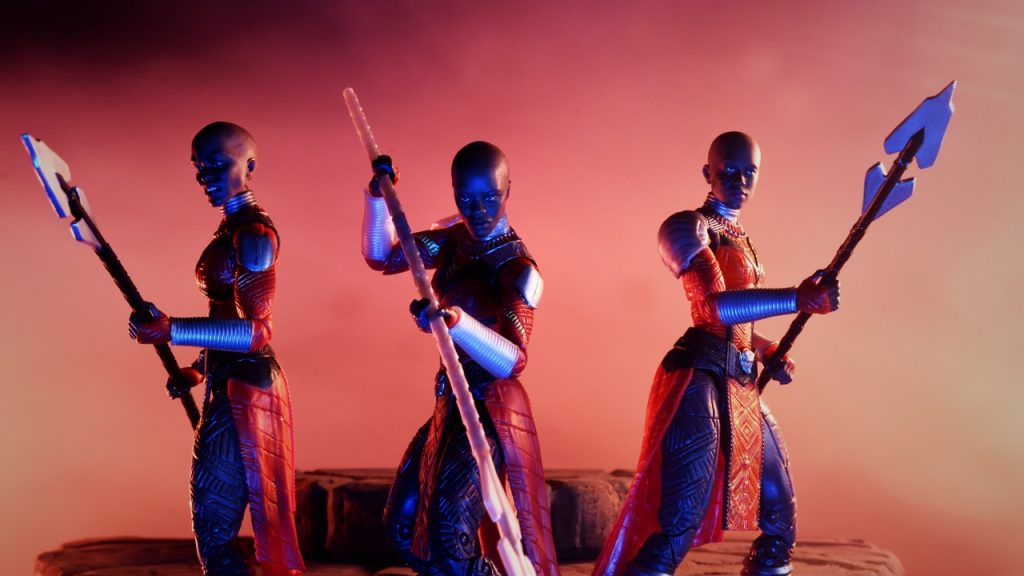Presentation Takeaways – Hasbro
This past Monday September 30th, representatives from Hasbro visited the SCAD Museum of Art to present on their product design pipeline, from ideation to execution.
In recent years, Hasbro has rebranded from a toy and board game company to a producer of branded content across media, from consumer products to motion pictures. They have also embraced the use of new technology, which provides opportunities for SCAD students from numerous majors to find work at Hasbro.
Lead product sculptor David Vennemeyer presented first on the design pipeline for 3D character products. Design begins with concept art sketches and go through multiple rounds of character development, until they are ready for the first sculpting pass. Hasbro designers translate the 2D designs to 3D models using Maya and ZBrush, adhering to rigorous technical specifications such as joint articulation and material allowances.

Senior digital product designer Danielle Tisdale expanded on the 3D development process. As an undergraduate at Ringling studying character modeling for games, her skills translated perfectly into a position as a sculptor for Hasbro. Danielle sculpts the hard plastic parts in articulated products, leaving space for internal mechanisms and external materials such as hair and fabric. She works on a variety of projects for multiple properties, from Star Wars to My Little Pony. For products based on cinematic properties such as their Marvel line, sculpting manager Dan Rheaume ensures that they capture the physical likenesses of the actors.
Patrick Marr, Director of Prototype Development, elaborated on the actual fabrication process. Prototypes are manufactured at the Model Lab, which employs 45 designers and puts out roughly 1500 new products per year. Ideas are iterated and roughed in the Hasbro Design Lab, currently managed by recent SCAD graduate Grant Dyer. Parts are made on-demand with Formlabs SLA printers, then assembled and painted. Some painting is done by hand, but in cases where exact accuracy is important such as actor licenses, parts are colored through computerized UV printing. Products are also pre-visualized with high-quality 3D renders, which are used in marketing and shown to industry partners.
David Vennemeyer also presented on Cake Mix Studios, Hasbro’s internal production studio for commercials and short form content. Cake Mix Studios hires in a wide array of areas including: writing, art direction, visual development, animation (using models sculpted and rigged by the design team), visual effects and UE4, location filming, editing, audio engineering, and motion design.
Finally, Jessica Marland, manager of University Relations and Recruiting, discussed Hasbro values and culture. Hasbro encourages an energetic, collaborative work environment, and provides its employees with numerous opportunities to give back to their communities through charity and volunteer work.
Jessica also provided some examples of areas in which Hasbro is currently hiring interns, co-op, and full-time employees: Game Art, Visual Development, Cinematography/Production, Visual Effects/Motion Design, Computer Animation, Comp Packaging Art, Model Art, Digital Game Play, Product Design, and Brand Design. More information is available at jobs.hasbro.com/.
After the presentation, the Hasbro representatives opened the floor to questions. Many students asked for advice on portfolio development, and the presenters consistently advised to demonstrate:
- Stylistic diversity – Hasbro designers work on a variety of IPs, so they should be able to work in a number of different art styles, and for different types of characters (bipedal, quadrupedal, etc.).
- Critical thinking – Applicants should show awareness of design problems, and their process for solving those problems.
- Technical competence – Because many product lines center on organic characters, anatomy is a vital skill to show; capturing likenesses is also important for lines such as Marvel.
Beyond 3D modeling, the presenters also expressed an interest in seeing high quality rigging, visual effects, and storyboarding.
